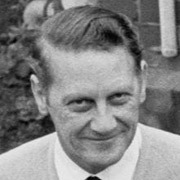
Ron Skelley
Ronald Albert Skelley was born on 5 March 1925. He was an accomplished musician, playing the mandolin in a band on an early release from record label TANZA. It did not bring him fame; but in this, as with his general career, he was quite happy to work quietly and diligently in the background.
In August 1949 Skelley joined government filmmaking body the National Film Unit, as a sound recording assistant. At that point the NFU was 413 weeks into its Weekly Review series, and sound was still recorded directly on film (magnetic media was yet to come into general use for sound recording). The busy routine of weekly deadlines gave Skelley valuable experience, as he learned the ropes in the sound department.
The first film he is known to have had principal responsibility for was The Elysian Bus (1951) for which he recorded sound and laid tracks. Unlike many other NFU films of the period, this studio-made road safety film featured actors speaking their lines, rather than the usual soundtrack of music and commentary.
Even a relatively straight-forward soundtrack required sound staff to have a thorough knowledge of the NFU’s library of mood music, as well as competence in techniques for sound recording and reproduction. As most footage was shot mute, a sound recordist on location could sometimes be persuaded to act out a scene as an extra. One example can be seen in New Zealand Mirror No. 14 (1953) where a Buried Village guide shows artefacts to Skelley, who plays an interested visitor to the tourist attraction.
His first on-screen credit, as sound assistant on independently-made feature Broken Barrier (1952) was unusual. At that point the NFU did not provide on-screen credits on its films to acknowledge the people that had worked on them. But the work of the sound department also occasionally included other companies. Pacific Films was only too happy to list the names of those who had played such an important role in recording Broken Barrier's soundtrack at the NFU studios.
From late 1952, production of the monthly magazine film Pictorial Parade saw the return of release deadlines and other pressures of regular production. Skelley worked on at least 330 items for the series, including five single-item issues for which he received on-screen credits. The first of these was Pictorial Parade No. 161 - Exercise Powderhorn (1965).
He also worked on at least 128 other NFU films, including work for television: One in a Thousand (1964), Peter Snell - Athlete (1964), New Zealand, South East Asia (1967), among others, and films for theatrical release, among them A Northland Summer (1962), Alpine Airways (1963), Ballet in New Zealand (1963), Wayleggo (1965), Tilt to the Sun (1966), and The Young Giant Kaingaroa (1966). Probably Skelley's most satisfying credit was as associate mixer on three-screen Expo hit This is New Zealand (1970).
The NFU sound facilities were increasingly in demand for recording soundtracks for independently made films and TV commercials. On occasions staff were loaned out on a commercial basis, to record sound on location for independent producers. One such assignment was to record sound for Pacific Films feature Runaway.
Skelley’s 1966 appointment as NFU Assistant Sound Director brought with it supervisory and administrative duties. As a result day-to-day sound recording was increasingly left to younger staff. When head of sound Claude Wickstead retired in 1977, Skelley took over as NFU Sound Director; he was involved in overseeing the move to new studios in Lower Hutt, which opened on 18 October 1978. Although well-equipped, the studios had to keep up with advances in technology. One of the most significant was the installation of equipment for Dolby Stereo sound mixing, at the start of 1984.
After 36 years with the NFU, Skelley retired in October 1985. He died at the Mary Potter Hospice in Wellington on 29 March 1992, aged 67.
Writing and original research by Clive Sowry; profile updated on 30 September 2022
Sources include
Image of Ron Skelley courtesy of Fairfax Media. Photo is a detail from a photo of the team behind film This is New Zealand, published in 1971 in The Evening Post. Alexander Turnbull Library reference: EP/1971/2747/8-F
Kit Rollings
'Skelley, Ronald Albert (Ron)', (Death notice) – The Evening Post, 31 March, 1992, page 23
‘Permanent Records of the Royal Tour’ – The Listener, 29 January 1954, page 6 (Volume 30, No 758)